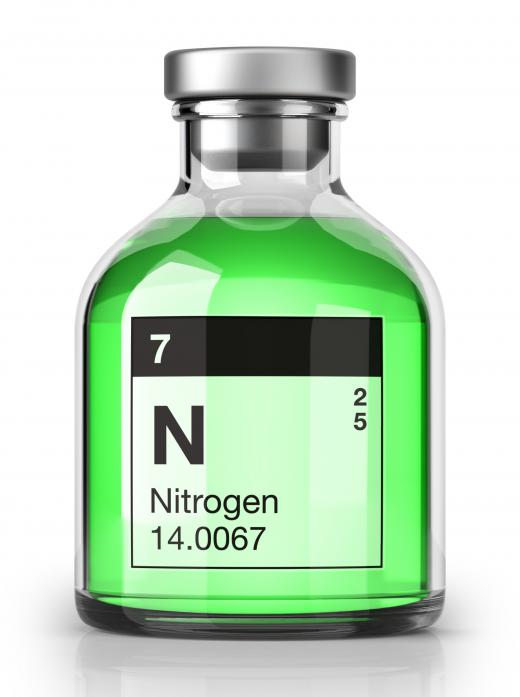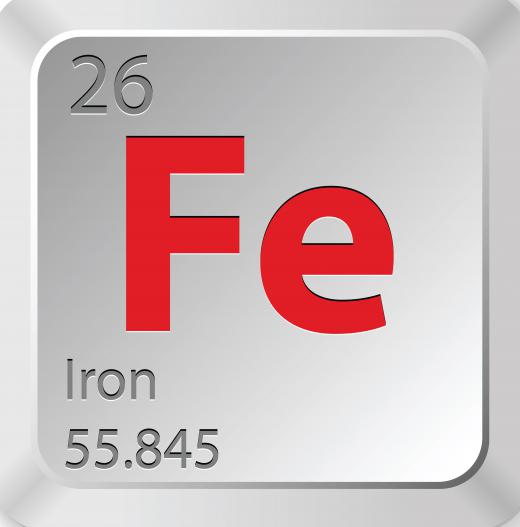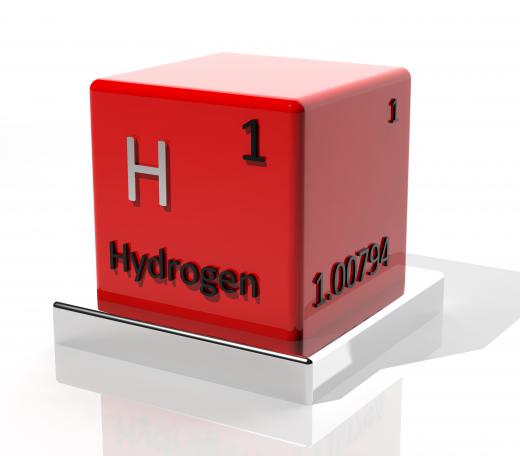What is the Haber Process?
The Haber process, also known in some places as the Haber-Borsch process, is a scientific method through which ammonia is created from nitrogen and hydrogen. Iron acts as a catalyst, and the success of the process depends in large part on ideal temperature and pressure; most of the time, it’s conducted in a closed chamber where the conditions can be closely controlled. The process is very important to a number of different industries, and has saved countless hours for manufacturers who would otherwise have had to create ammonia through other, usually much more laborious, means. It’s somewhat complicated to execute but, when done properly, it generally gets very dependable results.
How the Process Was Developed

This process was developed by the German chemist Fritz Haber in 1909, and was later expanded to an industrial scale by another German, Carl Bosch. Both men were awarded the Nobel Prize in 1918 for overcoming the technical barriers involved in the use of high-pressure technology on an industrial scale. Before the method was developed, ammonia was relatively difficult to extract and, as a result, tended to be quite expensive. Figuring out a way to more quickly synthesize it both made it more available and less costly. The process also paved the way for more controlled-environment experiments and chemical reductions.
How It Works

In most cases, there are three essential elements required for the creation of ammonia: hydrogen, nitrogen, and some sort of catalyst. Though osmium and uranium were initially used as the catalysts, they were later replaced by iron, as it is a much cheaper alternative and tends to work just as well. A controlled environment is really important, too. In general, ammonia is synthesized by combing one volume of nitrogen with three volumes of hydrogen in the presence of porous iron as a catalyst. The Haber process carries out this reaction out under an optimum temperature of 1022°F (550°C) and a pressure of 2175 to 3626 psi (15 to 25 MPa), respectively.

The hydrogen for the reaction is generally obtained by reacting methane or natural gas with steam in the presence of nickel oxide as a catalyst. The element is then made to pass over beds of iron oxide, along with nitrogen gas from the atmosphere. As the reaction is very slow under room temperature, the temperature is increased to accelerate the process. This reaction is exothermic, which means that it releases heat, so an increase in the temperature will only favor the reverse reaction and tends to lead to further reduction of the product.

This is in accordance to Le Chatlier’s principle, which states that any change in concentration, temperature, volume, or partial pressure to a system in equilibrium will cause the equilibrium to shift in order to counteract the imposed change. In simpler terms, if the temperature of the reaction is increased to speed up the production of ammonia, it will lead to a further breakdown of the produced ammonia into nitrogen and hydrogen. Since the catalyst can function effectively only around 752°F (400°C), the temperature has to be maintained between 752° and 1022°F (300° and 550°C).
Importance of Pressure

The Haber process tends to work the most efficiently in environments with very high pressure. This increases the formation of ammonia and improves the retention rates of the final product. Even under ideal conditions, though, only about 15% of ammonia is obtained in each pass. By repeated recycling of the unreacted gas, it is possible to get a recovery of almost 98%. Keeping that unreacted product available for recycling, though, is where things can get tricky. Outside of a highly pressurized environment, it’s nearly impossible.
Why It Matters
A great many industries and manufacturing projects have been greatly benefited by the efficiency and effectiveness of this process. Ammonia is very important to a number of different things — it’s common around the house as a cleaning product, but is also essential for the manufacture of nitrogen-containing fertilizers and most forms of ammunition. The process is used in the manufacture of nearly 100 million tons of fertilizer every year, and is also of vital importance to most militaries and defense contractors around the world.
AS FEATURED ON:
AS FEATURED ON:















Discussion Comments
This is amazing! The haber process is so awesome and fantabulous.
It is interesting to note also that had the Haber Bosch process not come about, Germany’s participation in WW I may never have happened due to a shortage of ammonia to build explosive devices in Germany. With this process, which was designed to make ammonia for fertilizer, and later realized as an explosive component, Germany would be able to participate in the war that the allies already had the resources they needed from Chilean Saltpeter also synthesized from ammonia.
I have thoroughly enjoyed reading this very interesting article. Props to you cool scientist! I'll see you at rocket club ! Cool Bananas! Full of Potassium! (K)or (K+) :B
Post your comments